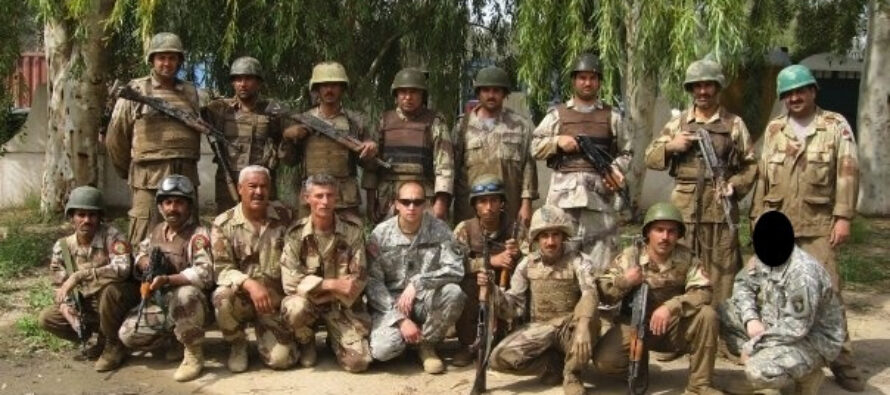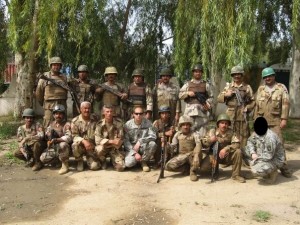10 Survival Lessons Learned In Combat

(Thomas Miller) My time in the Army taught me many things, from the “proper” way to make a bed all the way to how to correctly assault an enemy stronghold; and while every lesson is a valuable lesson, some seem to rank higher on the importance scale. Perhaps the most valuable lessons that I ever learned were the ones that peppered the 30 months of combat that I served in the Mideast. Most of these lessons pertain to sustainment of life and survival.
Lesson No. 1: Train As You Fight
Everyone fights differently. Some people, when faced with a fight, will go to extreme measures to avoid conflict; others will flare up with minimal coercion. Taking the time to train and to train realistically (training how you will fight) will maximize chances of surviving a conflict or time of difficulty. This can be any type of training, from the use of firearms to loading out and leaving home prior to a major natural disaster. Training will also develop muscle memory, the state in which your body and muscles will react from memory when performing tasks. This is essential when the time your brain has to process actions is limited.
Lesson No. 2: Invest In Equipment That Will Endure And Sustain Life
The last thing that anyone wants to have happen is for a piece of gear to fail in the middle of using it. This is particularly true in combat, the ultimate survival situation. Any piece of gear that is good enough to go into your kit should be good enough to have your life rely on it. Preparedness gear should be sturdy. Ask yourself if it can be dragged through the mud, dropped or used as a hammer and still function as intended. It should also be able to serve multiple purposes if possible. Survival scenarios will push equipment to its limits, so make sure to keep redundancy in mind or be able to make on-the-spot corrections and repairs on the equipment you choose to carry.
Lesson No. 3: What You Have Is What You Get
Sometimes, you end up alone and with what is in your pockets. When you end up in such a situation, the equipment or items that you left in the vehicle or back at the base are useless to you. If there are items that you need, keep them on you. The simple solution to making sure that you have all the items you need is to make a habit of carrying these items every day and everywhere you go. Many in the survival community refer to these items as an everyday carry or EDC kit.
Lesson No. 4: Plan For What You Will Face
Take the time to determine the inevitable, likely, possible and improbable threats you may come across. This applies to prepping and planning to survive. If you live in Central Canada for example, it is somewhat pointless to make preparations to survive a hurricane that will, with most certainty, never happen. While on the other hand, if you live in Miami, you would need to be a fool to not make such preparations. Determine what the threats are and appropriate reactions to each threat. This can include evacuation plans, equipment to obtain, remote caches to place or even who a good strategic survival partner could be.
Lesson No. 5: Mindset Is Everything
The mind of a champion is very similar to the mind of a survivor. Those who think to themselves that they will survive no matter what are often the ones who will survive. This can be accomplished through perseverance, difficult decisions and hard rights over easy wrongs. The common thread is to be smart and maintain a positive outlook. Maintaining a survival mindset also involves knowing individual and group limits and sometimes means having to push even harder, even when you think you have no fight left.
Lesson No. 6: Only Take What You Know How To Use
I have seen this lesson learned the hard way, over and over again. There is never a good outcome when a person — or group of people — places his life or well-being on a piece of equipment that he is not familiar with. If you are lucky enough, you will escape unscathed; but I doubt you will make this mistake twice. With that being said, you can avoid making this mistake altogether by putting in survival bags and kits only equipment that you are familiar with and know how to use. If you want to integrate new gear into preparedness kits, make sure to take it out of the packaging, read the directions and test it out to make sure it works.
Lesson No. 7: Maintain Situational Awareness
The modern era conflicts that have occurred in the Mideast are not conventional wars and have not occurred on a linear battlefield. As a result of this dynamic, there are no secure areas other than what you and your fellow soldiers ensure is secure. There is not a specific area that can always be counted on to be secure. With this in mind, it is imperative to always be aware of what is going on around you. I would be willing to bet that some of the patrons in the theater the night of the Aurora, Colo., shootings were so distracted that they figured the excessive and realistic shooting was part of another movie that was playing. With practice and vigilance, you can stay on top of your surroundings and extract yourself and those you care about from a potentially dangerous situation.
Lesson No. 8: Know Your Enemy
Much like modern warfare was outlined for situational awareness, the modern battle is not fought against a conventional enemy. Insurgents have infiltrated the military, police forces and governments of Iraq and Afghanistan while not wearing uniforms and hiding among women and children. Guerilla warfare is the enemy’s fighting style of choice, and who can blame them? Keeping a close group of friends and family members will result in an always reliable and trustworthy pool of people to lean on in difficult times. It is always important to stay alert and know who can be trusted and worked with.
Lesson No. 9: Know When To Flee And Know When To Fight
Some may say that only a coward will run away from a fight. But there is a big difference between staying to get killed and leaving a situation to regroup and come back a smarter and stronger fighter. If you find yourself in the middle of a disaster, it is also smart to make the safe move and survive rather than put on the tough act and never live to tell your story. This scenario has played out in recent disasters when citizens have ignored voluntary evacuation orders and lost their lives to stay and safeguard worldly possessions that can be replaced. Once a life is gone, it is not coming back.
Lesson No. 10: Never Fight Alone
There is a similarity between Rambo, Jason Bourne and Jack Bauer: They are all fictional characters, and none of them would ever be able to take on an army alone. There are historical accounts of service members who have completed heroic acts by themselves, but those are the exceptions and typically occur during small-scale skirmishes. When the going gets tough, put together a group of people you can rely on. This can be family members, friends, neighbors, or co-workers who can rely on you and, in turn, you can rely on them to help you survive. In the end, the lone wolf scenario is almost never going to be a successful scenario.
My experiences and time in military service have been invaluable to me, and I would not trade them for anything. But at the same time, it is not reasonable to expect everyone to have to endure the same challenges in life.
–Tom Miller
This article was originally published on Personal Liberty Digest
Visit: EZ Battery Reconditioning To Learn More here: http://www.survivalistdaily.com/ezbatteryreconditioning








Thought to mention there are a number of points to include regarding actually fighting, such as fire and move, high ground wins, etc. Anyway, love your website, and would like permission to include a link on my own. My site offers members tips and tricks on healthy living, saving money, raising children, emergency preparedness, etc….mostly solutions to every day problems people all over the world face and deal with.
Cheers,
Jeff